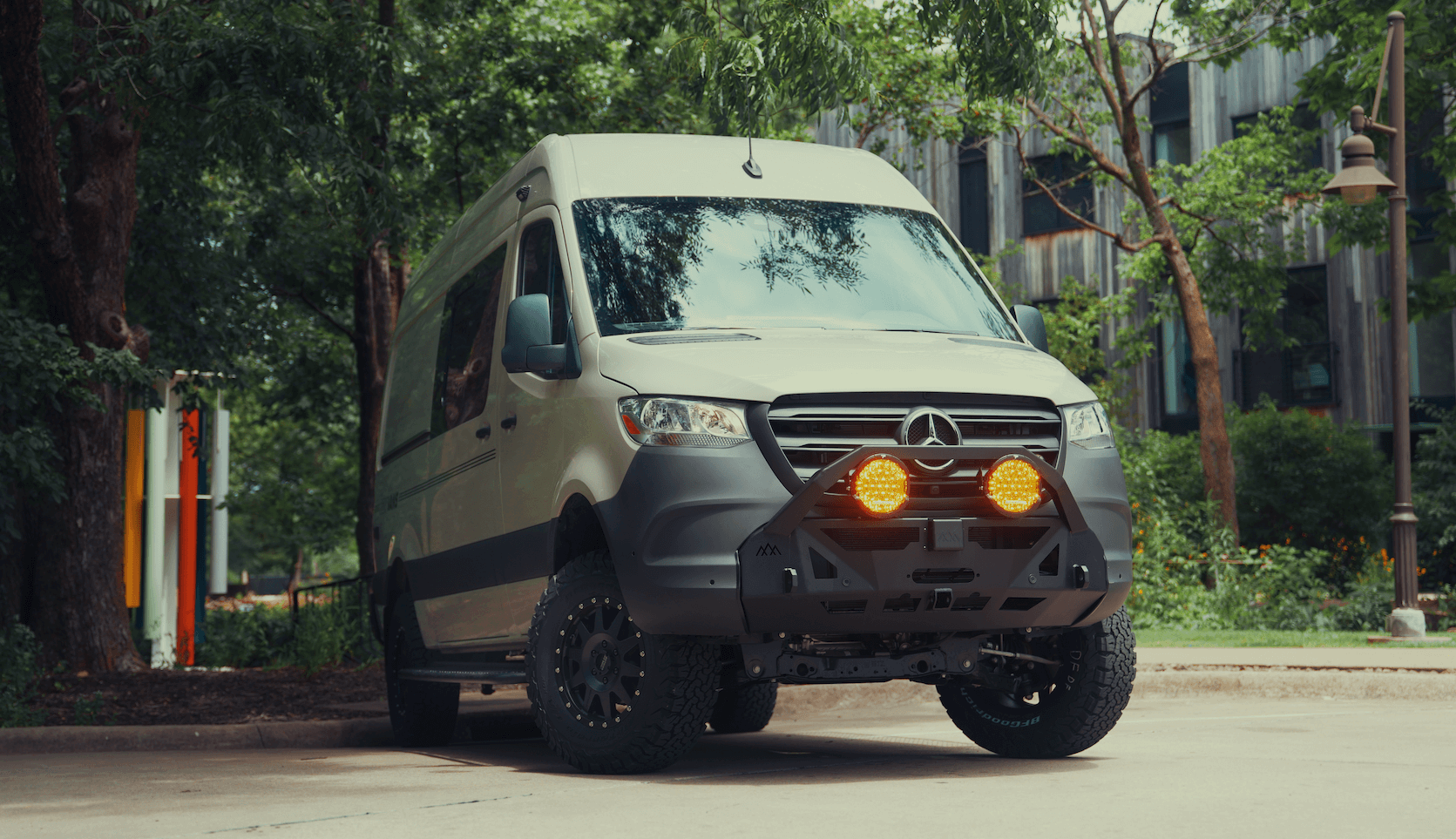Recreational Vans

Running air conditioning from batteries is possible, but the details matter. The air conditioner’s watt draw, your usable battery capacity, inverter efficiency, and the duty cycle all determine how long you can stay cool. Most rooftop units draw 1000 to 1800 watts when the compressor is on, and they cycle on and off depending on heat load. Lithium iron phosphate batteries are the common choice because they deliver high discharge rates, deep usable capacity, and consistent voltage. Plan the system like a calculator problem, not a guess.
Two numbers drive the plan. First is the continuous wattage while the compressor is running. Second is the duty cycle, which is the percentage of time the compressor actually runs over an hour. A 13.5k BTU rooftop unit might average 40 to 60 percent duty cycle on a mild day but can climb near continuous in peak heat. If your unit pulls 1400 watts and averages 50 percent duty cycle, your hourly energy use is about 0.7 kWh.
Battery capacity is best compared in kilowatt hours. Convert amp hours to kWh with V times Ah divided by 1000. A 12 volt 400 Ah lithium bank is roughly 4.8 to 5.1 kWh usable when you account for inverter losses and realistic discharge. At a 0.7 kWh per hour cooling load, that bank gives about 6 to 7 hours before hitting prudent depth of discharge limits. Smaller banks shrink runtime fast. Larger banks smooth out the spikes and support multi hour comfort.
If your AC is a 120 volt unit, size the inverter for both running watts and the compressor surge. Many modern air conditioners paired with a soft start reduce the surge dramatically. A quality 2000 to 3000 watt pure sine inverter is the typical range for rooftop AC. Expect about 5 to 12 percent loss through the inverter. Direct 12 or 24 volt DC air conditioners avoid inverter loss, run variable speed compressors, and can cut average draw in half compared to older ACs at the same comfort level.
Let us walk through practical examples.
A simple formula helps with planning. Runtime hours equals battery kWh divided by AC kW, then multiply by one minus expected loss, then multiply by duty cycle if cycling. Remember that real world heat load changes with sun, insulation, and setpoint. It is normal to see double the runtime at night compared to afternoon.
Solar, alternator, and shore power work together. A typical van roof holds 400 to 800 watts of solar, which can offset 0.4 to 0.8 kWh per hour at midday. That slows the drop but rarely runs the AC by itself. A modern secondary alternator or high output DC to DC charger can feed 30 to 120 amps, refilling the bank while driving. Shore power tops the list for long stays, and a small generator is a last resort for extreme heat or extended boondocking.
Verify the battery management system continuous discharge rating supports the AC load. Use short, properly sized cables, class T fusing, and a main disconnect. Vent battery compartments as required by code for your chemistry and follow manufacturer clearances for inverters and chargers. Secure all components to withstand hard stops and rough roads.
If you want cool air that just works, the best results come from a system designed as a whole. Battery size, AC type, inverter output, wire routing, and charge sources need to be balanced to your travel style. Our team builds complete vans and integrates climate control that keeps trips comfortable and quiet, without oversizing or guesswork. Explore our Recreational adventure vans to see how a finished system comes together.
Need a cabin that sleeps cool in summer and sips power at night? We plan, fabricate, and install power systems, rooftop or DC air conditioners, alternator charging, and control panels that are simple to use. For a start to finish experience tailored to your route and climate, check our Custom build van process. If you are comparing platforms that finance and want an AC ready canvas, visit Mainstream vans that finance.
Ready for battery powered cooling that matches your miles, seasons, and budget? Use the form below. We will translate your comfort goals into a precise electrical and climate package, schedule the work, and hand you the keys with a walkthrough and on site shakedown.
At OZK Customs we design and build Recreational Adventure Vans, Overland rigs, and Commercial vans with integrated climate and power. Our shop in Fayetteville Arkansas delivers complete custom builds and partial upfits with tested components, clean wiring, and clear documentation so your air conditioning performs on the hottest days and the quiet nights alike.
Ready for quiet, reliable battery powered cooling without guesswork? Tell us how you travel, and our team will design and install a complete climate system that fits your van and your budget. Submit the form to schedule a consult and get a precise build plan, timeline, and quote.
ADDRESS:
6159 E Huntsville Rd, Fayetteville, AR 72701
PHONE:
(479) 326-9200
EMAIL:
info@ozkvans.com